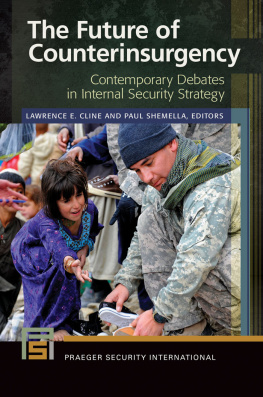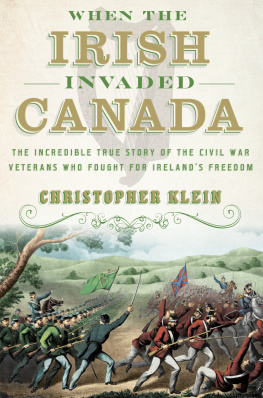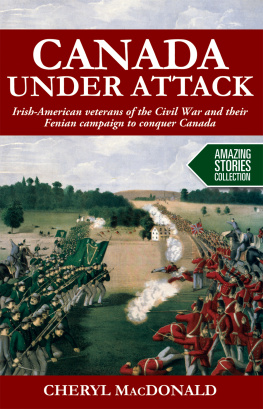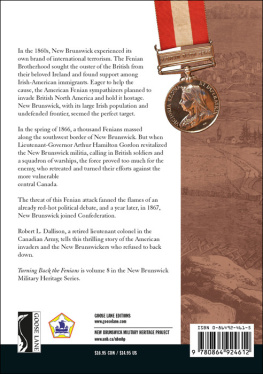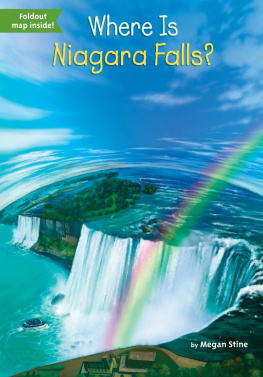REBELS
ON THE
NIAGARA
The Fenian Invasion of Canada, 1866
LAWRENCE E. CLINE
Cover image: The Green Above the Red [an imaginary incident during the Fenian Raids of 1866]. Credit: Library and Archives Canada, Acc. No. R9266-3319 Peter Winkworth Collection of Canadiana. Copyright: expired.
Published by State University of New York Press, Albany
2018 State University of New York
All rights reserved
Printed in the United States of America
No part of this book may be used or reproduced in any manner whatsoever without written permission. No part of this book may be stored in a retrieval system or transmitted in any form or by any means including electronic, electrostatic, magnetic tape, mechanical, photocopying, recording, or otherwise without the prior permission in writing of the publisher.
Excelsior Editions is an imprint of State University of New York Press
For information, contact State University of New York Press, Albany, NY
www.sunypress.edu
Production, Jenn Bennett
Marketing, Kate Seburyamo
Library of Congress Cataloging-in-Publication Data
Names: Cline, Lawrence E., author.
Title: Rebels on the Niagara : the Fenian Invasion of Canada, 1866 / Lawrence E. Cline.
Description: Albany : State University of New York Press, 2018. | Series: Excelsior editions | Includes bibliographical references and index. | Description based on print version record and CIP data provided by publisher; resource not viewed.
Identifiers: LCCN 2016059902 (print) | LCCN 2016059172 (ebook) | ISBN 9781438467535 (ebook) | ISBN 9781438467528 (pbk. : alk. paper) | ISBN 9781438467511 (hardcover : alk. paper)
Subjects: LCSH: CanadaHistoryFenian Invasions, 18661870. | Fenians.
Classification: LCC F1032 (print) | LCC F1032 .C63 2017 (ebook) | DDC 971.04/8dc23
LC record available at https://lccn.loc.gov/2016059902
10 9 8 7 6 5 4 3 2 1
To Priscilla for the patience,
and to Liz and Lucy for the love
Contents
Acknowledgments
The author would like to thank the Buffalo History Museum, Missisquoi Historical Society, and Library and Archives Canada for their great assistance in gathering material. He also would like to thank Professor Thomas Mockaitis and Doctor Peter Vronsky for their valuable comments on the initial manuscript.
Maps
Maps are by the author. Location details for the Battle of Ridgeway map are from Alexander Somerville, Narrative of the Fenian Invasion of Canada . Hamilton: J. Lyght, 1866. Location details of the Eccles Hill map are from Hereward Senior, The Last Invasion of Canada: The Fenian Raids, 18661870 . Toronto: Dundurn Press, 1991.
Map 1. Campobello Island raid
Map 2. Fenian Strategy for the 1866 Invasion
Map 3. Niagara Campaign Area
Map 4. Canadian Movements Leading to the Battle of Ridgeway
Map 5. Battle of Ridgeway
Map 6. Eastern Wing of the Invasion
Map 7. Eccles Hill
Map 8. Trout River
Foreword
I n June 1866, Americans invaded Canada along the Niagara Frontier. Although now somewhat a footnote in US and New York history, the military operations at the time were viewed with major alarm. The British and Canadians mobilized forces, battles were fought, and the United States sent troops to the Niagara Frontier. The situation could have exploded into a major crisis. As such, the 1866 invasion and its aftermath deserve more attention than commonly given.
The interesting twist on the 1866 fighting was that it was not government-to-government inspired, but rather operations by Canadian forces facing what now would be termed insurgents, namely the Fenian Brotherhood. The Fenian movement in the nineteenth century tried using militant tactics to fight for the independence of Ireland. In many ways, this group was stronger in the United States than it was in Ireland, and may have had more significance in America. At the end of the US Civil War, Fenian leaders decided to try to use Irish Americans, many of them combat veterans of the Civil War, to seize Canada and to make it the New Ireland as a means to force the British from old Ireland. For some Fenians, it was viewed as a mega-hostage operation to extract concessions from the British government. Others perceived it for the Fenians to ignite a larger US-British war. In either event, the ultimate goal was Irish independence.
The Fenian invasion of Canada in 1866 had many roots in the United States and particularly New York State, which was both the epicenter of Fenian leadership and a key support base and staging area for the military operations. Both the larger 1866 efforts and the smaller 1870 operation involved a relative flood of Fenians into New York. After two battles in 1866 and a small skirmish in 1870, the invasions turned into fiascoes, in many ways the result of US government responses in Upstate New York. The events leading up to the invasions and the political movement surrounding the Fenian Brotherhood continued to have significant impacts on the region.
The Larger Background
The Irish, of course, had struggled for many years for independence from Britain. The 1798 uprising was particularly widespread and violent, mainly because it involved French intervention, however weak and ill-timed. This was followed by a smaller uprising led by Robert Emmet in 1803. Both led to increased immigration to the United States by Irish with significant grievances, which almost certainly were passed along to their descendants. Much of the later Fenian leadership and many of its members, in fact, were the sons or grandsons of those who had fought in 1798.
In Ireland, after the failure of the 1798 movement, a group called the Young Irelanders emerged as a nationalist movement not based on religion. Their significance increased sharply as the Irish Potato Famine began ravaging the Irish population. The famine also created a fresh wave of embittered Irish immigrants to the US, most of whom settled in New York at least initially. Although the Young Irelanders, in part inspired by the revolutionary environment in Europe in 1848, tried to initiate an uprising in Ireland in 1848, it failed miserably. After the collapse of the movement, many of its leaders fled, several of whom were instrumental in creating the Fenian movement.












